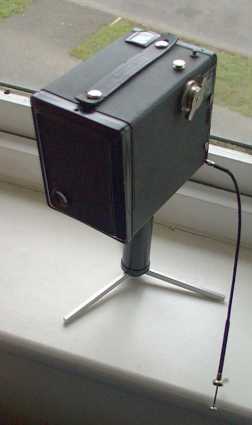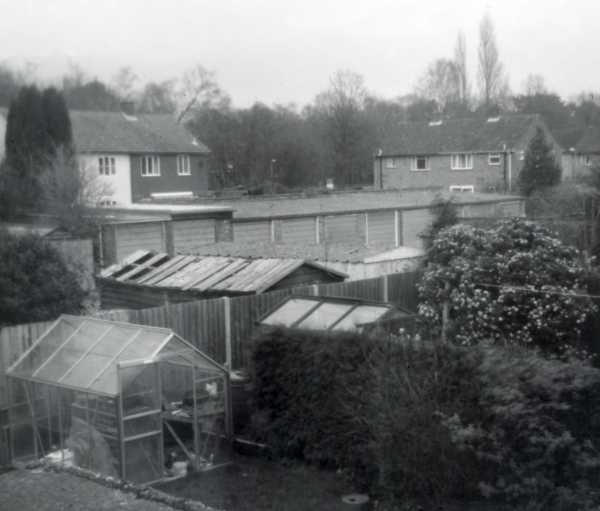|
Click here for complete Site Map
This is an Agfa Synchro Box, one of Agfa's first new products onto the UK market when production restarted after WWII. Introduced in 1949 it was produced until 1958 by which time it would have appeared rather old fashioned. In about 1953 it would have cost - (pounds, shillings and pence), £2 9s 0d. Its matching dedicated flash gun was £1 6s 9d extra including four PF14 flash bulbs.
Today the Agfa Synchro Box is not uncommon though there is no doubt that there are far more Kodak box cameras than any other make. Current value is generally in the under £10 range.
|

|
|
Specifications
|
|
Lens Type
|
Single element meniscus
with built in yellow (cloud) filter
|
|
Focal Length
|
105mm
|
|
Maximum Aperture
|
F11
|
|
Film Type
|
120 Roll Film
|
|
Picture Size
|
6x9cm
|
|
Shutter
|
Instantaneous + B
|
|
Flash Sync
|
with dedicated Bulb Flash Gun
|
|
Rangefinder
|
No
|
|
This picture was taken with a Epson PhotoPC 650 digital camera.
Another couple of features non usually found on box cameras are the twin tripod sockets and the remote cable release. These proved very useful for the next experiment:
Whilst the Synchro Box is designed for 120 rollfilm I found out by accident that half a sheet of 3.5"x5.5" enlarging paper (some old Ilford Multigrade II in this case) fits very nicely. No need to stick it down - the door and film rollers keep it in place just fine. This allowed me to try the camera out without having to shoot a whole film.
I prepared 4 half sheets of the Ilford paper and shot each one in turn in the Synchro Box with exposures of 1,2,4 and 8 seconds respectively. The remote release and tripod socket were really useful as I couldn't have held this camera still for those periods of time. On development only the 1 second picture was any good.
|

|
|

|
|
Agfa Synchro Box ready for action.
|
|
Whole (6x9cm) paper negative from 1 second test
|
|
|
|
|
This is the final print - done electronically of course. The composition has been much improved by cropping and the tonal range has been extended. The main problem was the amount of dust the negative had picked up whilst drying. Some of this has been retouched out - but the only real solution is to stop the dust settling in the first place. However I think it shows that even a simple box camera is quite capable of taking reasonably sharp photos.
|
|
Got a question or can't find the info you are looking for? Click HERE to contact us.
Click here for the Agfa shelf
Click here for complete Site Map |




